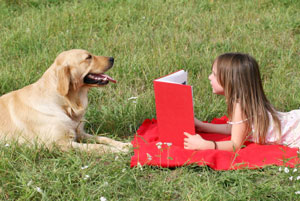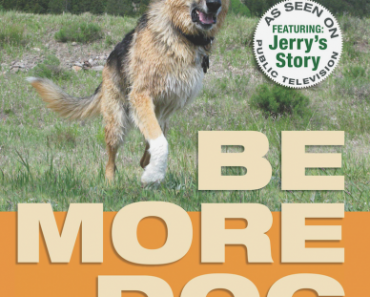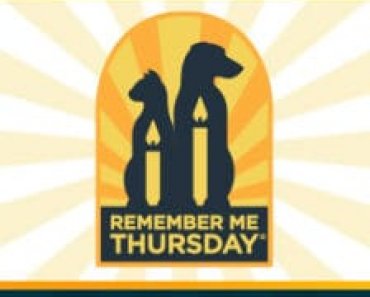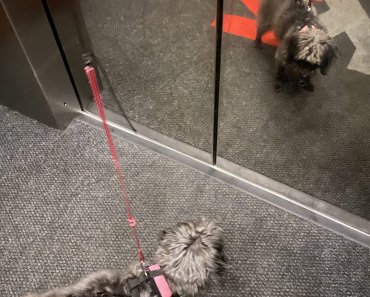
For original article click here
Friends for life
What could be more delightful than to witness the bond of friendship blossom between a child and a dog? Some dogs naturally love kids. Some kids have a way with dogs. If you are lucky, those are the types of kids and dogs you know or will know. But why leave it to luck? Give your dog and the kids in your life the best chance for a successful relationship by taking deliberate steps to create a kid-loving dog and to develop empathy and respect in children.
For the safety of your dog and the children he will encounter, your dog should never be put in a position where growling at or biting a child becomes the only option. In honor of Dog Bite Prevention Week (May 20-26, 2012), Doggone Safe offers tips on how to promote a safe and happy relationship between dogs and kids.

Defining dog/child relationships
There are three factors to consider with respect to the dog/child relationship: the opportunities they have for interaction, the behavior of the dog, and the behavior of the child. As a parent and/or dog owner, you have the opportunity to influence these factors by managing the environment in which the dog and child interact, training the dog, and teaching the child.
Management
Management means controlling the environment to ensure the safety of both the dog and the child. For example, if you have a dog that fears children, but children visit your home only rarely, you can opt for a management solution to keep your dog happy and the children safe. The simplest thing to do during a visit is to keep the dog away from the children, in a crate or in a room with a long-lasting and tasty chew (a stuffed Kong for example). If you host a big party with lots of kids and you have three boisterous dogs, you might send the dogs to a kennel for the day to ensure that there are no incidents.
Regardless of how wonderful the relationship is between your dog and your own or visiting kids, management is essential when you cannot directly supervise. If the children are very young or if they are likely to want to interact with the dog, put the dog away with a suitable chew or take him with you when you can’t supervise. Keep the dog on a leash when you are outside in the yard if he has ideas about chasing the kids.
Careful and thoughtful management prevents situations from arising in which the dog or child gets overly excited or antagonism develops:
“Fido ate my homework!”
“Mary tried to take my bone!”
To encourage a loving relationship that will not require as much management (eventually), start early teaching the child and training the dog!
Dog training
There are two main goals to dog training that focuses specifically on encounters with children. This type of training is important whether or not you are a parent with your own kids, because every dog will encounter kids inevitably. The cuter he is, the more likely he is to attract attention! The first training goal is to ensure that your dog likes kids and enjoys the things that kids do. The second goal is to teach your dog suitable behavior around kids.
Preparing the dog
Doggone Safe co-founder Teresa Lewin says, “You can’t prepare the world for your dog, but you can prepare your dog for the world.”
As a dog owner you are legally and morally responsible for the well-being and the behavior of your dog. Prepare your dog for whatever the world might throw at him by making sure he has many and varied experiences—and that these experiences are associated with positive consequences. Take treats with you everywhere, and give the treats to your dog as he experiences new places, sounds, and people. If kids come to pet your dog, feed him from your hand or let him lick cream cheese out of a bone that you are holding. These actions give you control of your dog’s head and mouth while the kids pet him. Soon your dog will welcome the attention of children.
Teaching a puppy to enjoy handling by children.
Video courtesy of Sarah Owings.
To accustom your dog to the types of things children or strangers might do, give him hugs, pull gently on his ears and tail, and tug gently on his fur all over his body. At the same time, feed him goodies from your hand or allow him to chew on a yummy bone. Pairing touches with a treat can make even rough handling a positive experience.
It is essential to use the treat in this type of conditioning. Simply doing “strange things” to the dog or puppy, like the pulling, tugging, and touching, will not teach him to tolerate this attention from others. Your dog may even come to feel anxious around you for fear you are going to maul him. If you have associated treats and the good feelings that go with getting treats with these strange and potentially bothersome touches, the dog will be welcoming of touch. When a toddler runs up and yanks on his tail, the dog will be more likely to look at you as if to say “Where’s my treat?” than to snap at the annoyance.
Touch desensitization exercises should be done daily with a new dog or puppy, and monthly throughout a dog’s life.
Training appropriate behaviors
Children can be very exciting to dogs, and an overly friendly dog can cause injury in his exuberance. There was a story in our local news recently about a man who bent to pet a friendly dog. The dog jerked its head up and the man ended up with a broken nose. The man is suing the dog owner, and he will likely win the case. The dog owner is ultimately responsible for anything the dog does and for any injury the dog causes, regardless of provocation.
Avoid these situations by training your dog to exhibit appropriate behaviors when kids or adults come to greet him. If you teach nothing else, teach your dog to sit for greeting. This is a very easy behavior to teach and it gives your dog predictability and control in situations with new people. It also reduces the chance that he will irritate or injure anyone.
Start working on this greeting behavior at home with family members and friends. Put the dog on a leash, go up to the practice person (but not so close that the dog can reach him or her). Hold a treat over the dog’s nose (or just say “sit” if the dog already knows the behavior), click when he sits, and give a treat.
Participate in Doggone Safe’s International Dog Bite Prevention Challenge! In celebration of Dog Bite Prevention Week, Doggone Safe is challenging its members and “Be a Tree” presenters around the world to educate 50,000 children about safety around dogs during the month of May.
Repeat a few times until the action of moving toward a person, or a person coming toward you and your dog, elicits an automatic sit. Next, allow the practice person to come to the dog, offer a treat, and pet him. Use the food as a lure to keep your dog sitting if necessary. If your dog gets up, simply call him away in a happy voice, circle around, and try again.
When your dog is an expert at sitting to greet in the house, practice outside and in more distracting environments. Work with the practice people and, eventually, with strangers who indicate that they want to pet your dog. Be firm with strangers and explain that you are training your dog; they must wait until he sits before touching him.
Other appropriate behaviors you may want to teach are: lie down, put head on paws, put head on someone’s lap, bring a ball, drop it and step back, and go to bed. With these behaviors, you have several ways to instruct the dog in the presence of children, strangers, and/or visitors to your home. There are many articles posted on the Karen Pryor Clickertraining website that explain how to use clicker training to teach basic behaviors.
Training appropriate behaviors differs from the conditioning discussed above. In training, you are reinforcing the dog for specific behaviors. The preparatory conditioning was only associating treats with touch and other environmental stimuli; it did not require any particular behavior from the dog, other than general calmness.
Training games
Training games are perfect tools for encouraging cooperation between dogs and kids and for teaching appropriate behaviors in both. Adults should teach the games to the dog before children get involved. Remember that adult supervision is essential during play sessions, since excitement can lead to over-arousal in either the dog or the children.
-
Hide-and-seek
This activity is a hit with both two- and four-footed family members. One child distracts the dog, while another hides and calls for him. When the hider is found, he gives the dog a click/treat. Once the dog gets the hang of the game, the hider can make it more challenging by going out of sight or into another room, while the other child encourages the dog to “go find Jordan!” This game provides physical and mental stimulation. -
Fetch
The primary rule of fetch is that the dog gives back the fetched object and steps back to wait for the next throw. Offer the dog a treat in exchange for the object and click as soon as the dog lets go. If the dog tries to engage in a game of tug, or refuses to give up the object, the kids should end the game and ignore the dog for a while.“Any game that pits the strength or speed of the dog against that of the child could lead to over-excitement and even a biting accident,” says Teresa Lewin. “Adult supervision and proper training are essential.”
-
Stay inside the rope
Place a circle of rope on the floor and give each child a clicker and some small dog treats (the kids can make a clicking sound with their tongues if no clickers are available). Toss a treat into the center of the circle to get started. When the dog has eaten the treat, click before he steps outside the rope and toss another treat into the circle. The goal is to click and reward as often as possible while the dog has all four paws inside the rope circle. Once the dog has the idea that the place to be is inside the rope, the children can start moving around the room, still clicking and tossing treats into the circle.Play this game in various locations, and eventually the dog will learn to go and lie within the rope. When that happens, you can take the rope into any situation where you need to establish a boundary for the dog. A rope game is easier and safer than using a rope to tie up the dog!
Building trust with training games.
Video courtesy of Sarah Owings.
-
Sharing and tug games
Dogs need to learn to share, and kids need to learn to respect dogs. Controlled games with two identical items can help accomplish these goals. These games should be established with a dog by an adult to start. When the dog has learned the rules, get the children involved. Play only with children who are over the age of 9 and who can follow directions well.
Teaching the children
To create a successful relationship between children and your dog, teach children how to interact properly with the dog. Getting the kids involved with clicker training is a great way to build empathy and respect. Clicker training is ideal for kids because it is hands-off—so little fingers don’t get painful nips from razor-sharp puppy teeth—and there is no physical strength required. The Clicker Puppy DVD shows how children can be involved in clicker training basic behaviors, right from the start of puppy-hood!
Be a Tree
The most important thing to teach your kids is how to “Be a Tree.” This means stand still, fold your branches (hands folded in front), watch your roots grow (look at your feet), and ignore the dog or puppy if he gets too frisky or is jumping or nipping. Running away, screaming, yelling “No!” at the dog, or pushing him away may make a dog even more excited or may frighten him. Kids who are “being a tree” are boring to a dog, and he will soon give up seeking their attention.
Speed up the “Be a Tree” learning process by giving the dog a click/treat when he is near kids but has all four feet on the ground. Kids can click/treat, too, whenever the puppy has all feet on the floor.
Small dogs and puppies can safely learn about “Be a Tree” from kids, but if your dog is large or too excitable, it is not a good idea to set him loose with kids. Start with a leash and make sure the dog understands that when the kids assume the tree position, he is to sit. Use the same approach to teaching “Be a Tree” as you did teaching the “sit to greet.”
Start teaching children with the dog absent. Have someone pretend to be a dog, or use a stuffed dog. Every time the pretend dog gets frisky, the kids should “Be a Tree.” Make this lesson even more fun by introducing TAGteach as part of the game. When a child does the tree pose, you tag (click) and count up the tags/clicks. When the group has earned a set number of tags, reward them by bringing the real dog in to practice. Visit the TAGteach website for more information.
Teach treat delivery
Teach kids how to give food to the dog in a way that keeps the dog from nipping at them. The kids can drop the food on the ground, toss it, or give the food from an open hand. Make a game of treat delivery and practice while tagging for correct technique, using a stuffed dog at first. Again, let the children earn enough tags to bring in the real dog. When the real dog comes in to clean up the treats, the kids can click each time he eats one. The game is fun for both kids and dog, and helps the dog remember to keep his paws on the floor.
Teach proper handling and body language awareness
Children should know the signs that announce that a dog has had enough of something or that the dog is or is not enjoying an interaction. Learn about dog body language yourself and then teach your kids how to pet and touch the dog in a way that the dog likes. You can tell if a dog likes something if he comes back for more when you stop, or if he leans in to appreciate the petting. If the dog turns away, tries to leave, licks his lips, yawns, licks your face over and over, or shows a half moon of white in his eye, he is not enjoying the interaction. If he does a big shake-off when the interaction is over, this may also indicate that he did not enjoy the attention.
Your dog probably does not like hugs and kisses, even if you think he does. Use your observation skills to determine what kind of petting and touch your dog enjoys and teach the kids how to offer that kind of affection. Encourage them to scratch the dog on the neck or chest rather than petting the top of the head or hugging and kissing. Use a stuffed dog and tag for correct interactions before bringing in the real dog.
Talk to your kids about how it would feel if strangers (or even their own family members) came up to them repeatedly to tell them how cute they are, touching and hugging them at the same time. Talk about the fact that there is a time and place for showing affection. For example, would your children like it if you ran out onto the soccer field to give them a big hug and a kiss in the middle of a game? Would they like it if you gave them a hug before bed when they are sleepy?
Dogs have preferences, too. If they are busy watching a squirrel, chewing on something, or sleeping, they do not want affection from kids. Teach kids not to pursue a dog but to give affection when the dog comes for it.
Visit Doggone Safe to find out more about dog body language and for free resources that can help you teach your kids. The Doggone Crazy! board game is an entertaining way to reinforce lessons about dog body language and safe behavior around dogs.
So happy together
Taking the time and thought to set up success for the dogs and kids in your life yields wonderful results. When kids and dogs learn to respect and understand one another, they can create strong bonds of love. Positive reinforcement-based training, fun tools and treats, and an emphasis on safety are the means to a positive end: treasured long-term relationships shared by all of your loved ones, young and old, human and canine.


























